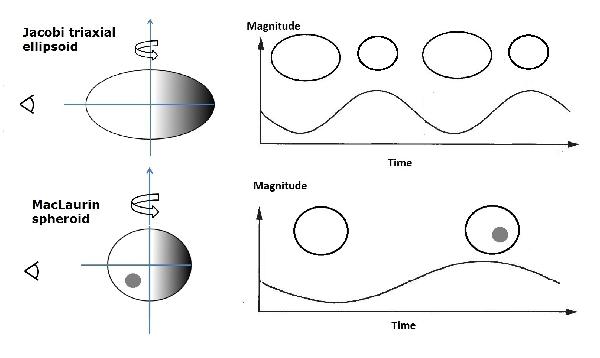Fig. 1

Upper panel: assuming TNOs as triaxial ellipsoids, with axes a>b>c (rotating around the short axis c corresponding to the lowest energy state of rotation), we obtain two brightness maxima and two minima per rotation cycle (double-peaked light curve) as illustrated in the curve. The maxima correspond to the largest cross-section of the object projected in the direction to the observer. Lower panel: if the TNO is a MacLaurin spheroid with an albedo variation on its surface, we obtained one maximum and one minimum per rotation cycle (single-peaked light curve). Note that the ordinates are magnitudes, not brightness.
Current usage metrics show cumulative count of Article Views (full-text article views including HTML views, PDF and ePub downloads, according to the available data) and Abstracts Views on Vision4Press platform.
Data correspond to usage on the plateform after 2015. The current usage metrics is available 48-96 hours after online publication and is updated daily on week days.
Initial download of the metrics may take a while.


